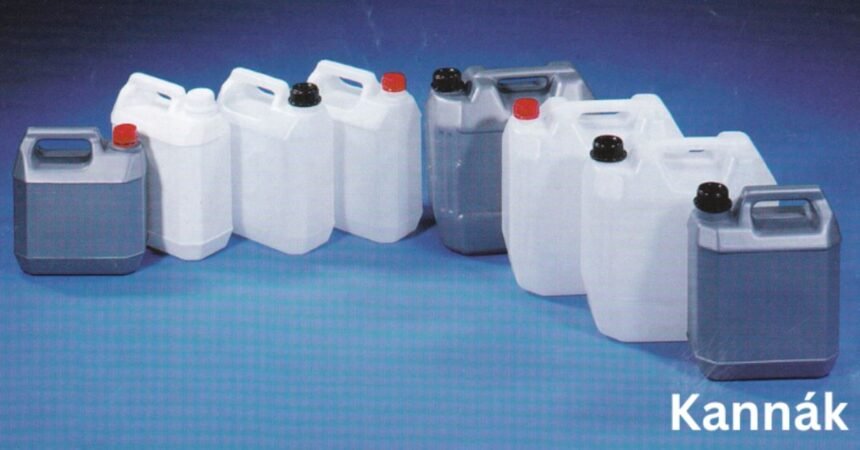Introduction
Kannák have become essential tools in many industries, from agriculture to construction. Known for their durability and versatility, kannák are used for storing, transporting, and dispensing liquids and other materials. As businesses and individuals alike look for efficient storage solutions, the demand for high-quality kannák continues to grow. This article explores the various applications, benefits, and challenges associated with This containers, while offering practical solutions for those seeking to incorporate them into their operations.
What Are Kannák?
Definition and Overview
Kannák are large containers designed for storing and transporting liquids, chemicals, and other materials. Typically made from robust materials such as plastic or metal, This containers are built to withstand various environmental conditions. They come in different sizes, ranging from small hand-held containers to larger industrial-grade versions.
Primary Uses
While kannák are often associated with liquid storage, they serve a broad range of purposes across industries. For example, they are commonly used for:
- Storing water in agricultural settings.
- Transporting fuel in the automotive industry.
- Holding chemicals in manufacturing plants.
Their versatility makes them indispensable in environments that require safe and efficient material handling.

Importance of Kannák in Various Industries
Agriculture
In agriculture, kannák play a critical role in water storage, especially in areas prone to drought. Farmers rely on kannák to irrigate crops, ensuring they have a consistent water supply throughout the growing season. In addition to water, farmers use This containers for storing fertilizers and pesticides.
Construction
Construction sites often utilize kannák to store fuel and other essential liquids. These containers are essential for maintaining equipment and ensuring that operations run smoothly. Furthermore, This containers used in construction are typically designed to resist wear and tear, making them highly durable in harsh environments.
Manufacturing
Manufacturing industries require specialized kannák to store chemicals and other materials. These containers must meet safety regulations to prevent leaks and contamination, ensuring a safe working environment. This containers are also used for waste management in factories, where they collect hazardous materials for proper disposal.
Benefits of Using Kannák
Durability
One of the main benefits of kannák is their long-lasting durability. Made from high-quality materials, these containers are designed to resist corrosion, pressure, and environmental stress. Whether exposed to extreme heat, cold, or chemicals, This containers offer reliable performance over extended periods.
Cost-Efficiency
Investing in kannák can save money in the long run. Their robust construction means fewer replacements, reducing overall maintenance costs. Moreover, their ability to store large quantities of materials minimizes the need for multiple containers, streamlining operations and reducing expenses.
Versatility
Kannák are incredibly versatile. From water storage to fuel transportation, they adapt to a variety of needs. Their customizable design allows industries to modify them for specific purposes, making them a flexible solution for different operational requirements.
Applications of Kannák in Real-World Scenarios
Case Study: Water Storage in Arid Regions
In many arid regions, water scarcity is a persistent issue. Local farmers use kannák to store rainwater during the wet season. This allows them to irrigate crops during dry periods, improving agricultural productivity. The ability of This containers to store large amounts of water helps mitigate the effects of droughts, contributing to food security.
Automotive Fuel Transport
In the automotive industry, kannák are crucial for transporting fuel safely. Mechanics and vehicle operators often need portable solutions for moving fuel between locations. This containers provide a safe and spill-free way to store and transport gasoline or diesel. Their compact size and secure lids reduce the risk of accidents during transportation.
Chemical Storage in Factories
Factories dealing with hazardous chemicals rely on specialized kannák designed to contain harmful substances securely. These containers are built to meet stringent safety standards, ensuring that no leaks occur during storage or transportation. By using This containers, manufacturing facilities can safeguard their workers and prevent environmental contamination.
Challenges Associated with Kannák
Leakage Issues
Although kannák are generally durable, they can develop leaks over time, especially if exposed to harsh chemicals or extreme conditions. Leakage not only leads to material loss but can also pose safety risks, particularly in environments where hazardous liquids are stored.
Space Limitations
Storing large kannák can be challenging in environments with limited space. Their bulkiness often requires strategic planning to ensure that they fit into a facility without disrupting other operations. This becomes even more problematic in industries that rely on multiple containers, such as agriculture or manufacturing.
Weight and Handling
When filled, kannák can be heavy and difficult to transport. Workers may struggle to move these containers manually, increasing the risk of injury. Additionally, improper handling can lead to spillage or accidents, especially in settings where hazardous materials are involved.
Solutions to Common Kannák Challenges
Preventing Leakage
To prevent leakage, industries should invest in high-quality This containers with advanced sealing mechanisms. Regular inspections are also necessary to identify wear and tear that could lead to leaks. In situations where chemical corrosion is a concern, using specialized This containers made from chemical-resistant materials can mitigate risks.
Space Management
Proper planning is essential when it comes to storing kannák in confined spaces. Industries can use vertical storage racks to maximize space efficiency. Additionally, collapsible This containers offer a practical solution for those who need to store containers when they are not in use.
Improving Handling Safety
To reduce the risk of injury, businesses should train workers on the proper techniques for handling heavy This containers. Using mechanical aids, such as forklifts or pallet jacks, can also ease the transportation of large containers. In cases where manual handling is necessary, lighter materials or smaller-sized This containers may be more suitable.
Environmental Impact of Kannák
Recyclability
Many kannák are made from recyclable materials, such as high-density polyethylene (HDPE). This makes them an eco-friendly option for industries looking to reduce their environmental footprint. By choosing recyclable kannák, businesses can contribute to waste reduction and promote sustainability.
Reducing Plastic Waste
In industries that require the use of plastic This containers, adopting reusable containers can help cut down on plastic waste. Some companies offer refillable This containers, which can be cleaned and reused multiple times. This not only reduces waste but also lowers the demand for single-use plastics.
How to Choose the Right Kannák for Your Needs
Assessing Material Requirements
The first step in selecting the right kannák is to evaluate the material requirements. For example, metal This containers are ideal for transporting fuel, while plastic containers are better suited for water storage. Industries dealing with chemicals should choose This containers made from materials that resist corrosion and chemical damage.
Considering Size and Capacity
Kannák come in various sizes, so it’s essential to select a container that meets your storage or transport needs. Smaller This containers are easier to handle but may not hold enough material for larger operations. Conversely, larger This containers offer greater storage capacity but may require mechanical assistance for handling.
Examining Durability Features
Durability is another key factor to consider when choosing This containers. Containers that will be exposed to harsh conditions, such as extreme temperatures or corrosive chemicals, need to be built with materials that can withstand these challenges. Look for containers that offer enhanced sealing and reinforced walls for added protection.
Maintaining Kannák for Long-Term Use
Regular Inspections
Routine inspections are crucial for maintaining This containers in good condition. Check for signs of wear, such as cracks, leaks, or corrosion. Promptly addressing these issues can extend the lifespan of the container and prevent potential safety hazards.
Proper Cleaning
Cleaning kannák after each use is important, particularly in industries where they store chemicals or food products. Residue buildup can degrade the material over time, leading to contamination or leaks. Use cleaning solutions that are appropriate for the type of material stored in the container to avoid damage.
Safe Storage
When not in use, store This containers in a cool, dry place away from direct sunlight. Exposure to extreme temperatures can weaken the container’s structure, increasing the risk of failure. Additionally, avoid stacking heavy objects on top of This containers to prevent crushing or deforming the container.
Future Trends in Kannák Technology
Smart Kannák
These This containers can provide data on liquid levels, temperature, and pressure, allowing businesses to optimize their storage and transportation processes.
Eco-Friendly Innovations
As industries move towards sustainable practices, the development of eco-friendly This containers is on the rise. Manufacturers are experimenting with biodegradable materials and reusable designs to reduce environmental impact. These innovations will likely play a significant role in the future of This containers production.
Conclusion
Kannák are essential tools across various industries, offering practical solutions for storing and transporting materials. From agriculture to manufacturing, these durable containers provide a range of benefits, including cost-efficiency, versatility, and safety. However, like any tool, This containers come with their own set of challenges, such as leakage and handling difficulties. By choosing the right This containers, implementing proper maintenance, and staying informed on industry trends, businesses can maximize the advantages of these valuable containers.
FAQs
1. What materials are commonly used to make kannák?
This containers are typically made from high-density polyethylene (HDPE) for plastic versions, or metal for more heavy-duty applications. Both materials offer durability and resistance to environmental factors.
2. How can I prevent leaks in my kannák?
Invest in high-quality This containers with secure sealing mechanisms. Regular inspections and using containers made from chemical-resistant materials can also help prevent leaks.
3. Are kannák recyclable?
Yes, many This containers made from plastic, particularly HDPE, are recyclable.
4. What are the common uses of kannák in agriculture?
They provide farmers with a reliable method of transporting and distributing these materials.
5. Can kannák be used for storing hazardous materials?
Yes, many This containers are designed specifically for hazardous materials, including chemicals. These containers meet strict safety regulations to prevent leaks and contamination.








